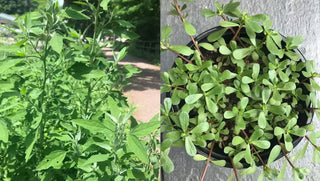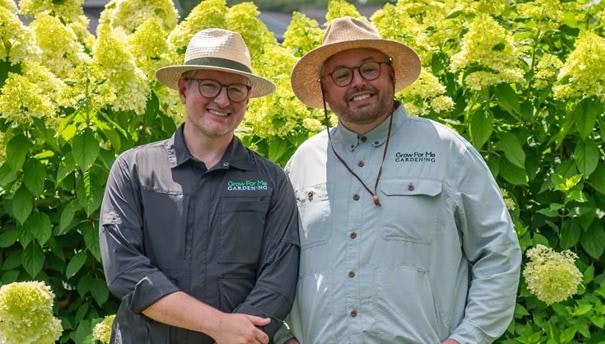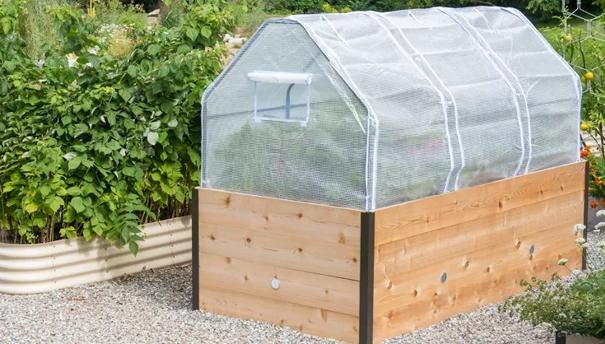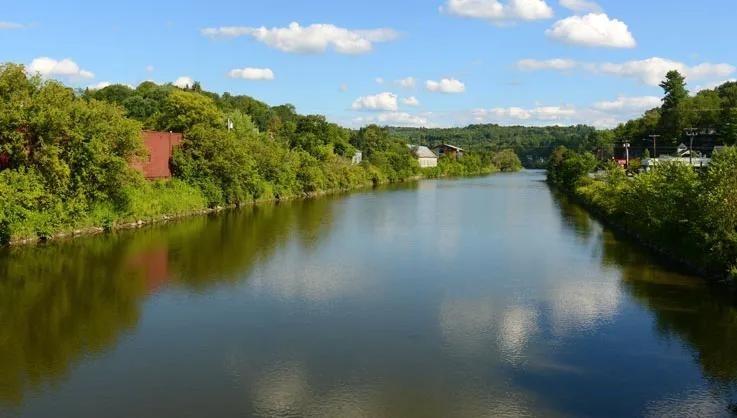Looking out to the garden now, deep into the growing season, I see a wild place. It is wildness I see because soil remains at the surface, not smothered by concrete and tar. Wild, for in the garden, the life story is narrated by the myriad species who, alongside humans, call this place home. So when I try an approach to gardening and call it gardening with the wild, what does that even mean? It sounds redundant; isn’t gardening an inherently wild task? Don’t we engage with the wildness (in nature and in ourselves) when we garden?
Yes, we absolutely do, and what if we could be more wild? Gardening with the wild is an invitation to leave space for the truly wild plants in our gardens, the plants whose seeds do not spread by our hands, the plants we know collectively as weeds. I know, I know it seems funny to let weeds into our gardens when pretty much all of the messaging we receive is to remove the pesky beings by any means necessary. Well, turns out, these plants can really help us, and can actually, if we let them, be a wonderful addition to our gardens.
Please know that I am not advocating that you completely turn your garden over to the whims of nature. We, as stewards of the land, have a say too! But by learning more about the life cycles and growth habits of weedy plants we can selectively weed, or make choices based on individual plants and the needs of our own garden, as opposed to blindly following mainstream opinion that a weed free garden is the best garden. Among the many benefits that gardening with the wild provides, less time spent weeding means more time to sit and savor in our beautiful, replenishing garden spaces. As a lazy gardener, I say, yes please.
 Wild Carrot
Wild CarrotMany benefits, you say? Ok, let’s hear ‘em. First off, wild, weedy plants increase the vitality of our gardens by increasing plant diversity. We know that there is strength in diversity in the context of human relationships, and that same maxim applies to our garden spaces too. A range of plant species can create buffers to those diseases that target an individual plant species or family. And the growth habits and root structures of wild, weedy plants have much to give to the garden ecosystem. As an example, long taproots draw up water and nutrients from deep in the soil and what they don’t use, they leave at the surface for plants with shorter root systems—I’m looking at you, wild carrot (daucus carota)!
 Ragweed
RagweedWild, weedy species offer food and shelter spaces for pollinators. Ragweed (ambrosia artemisiifolia) is a well-known weed and a lesser-known food source for a documented 220 insects! A native of this land in Northeastern North America, ragweed has developed deep relationships with the beings of this place over countless generations. At a time when insect populations are plummeting, we need to consider letting plants like ragweed take up space among our nursery plants.
Those very same pollinators that we invite into our garden can be, at a different point in their life cycles, garden pests. Allowing wild, weedy plants to stay in our garden spaces can provide an alternate host for those insects with sucking, chomping mouthparts that tease us with their devouring capabilities as they rampage through our ornamental and food crops.
Is all this gardening making you hungry? Feast on the weeds! Many of the plants that show up unannounced in our gardens have a long relationship with humans as edible and medicinal herbs. Another common name for the ubiquitous lambsquarter (chenopodium album) is wild spinach, and purslane (portulaca oleracea) was brought intentionally by European settlers as an herb for the garden (oleracea is Latin for ‘of the vegetable garden’). When we garden with the wild, we continue the long tradition of working with these plants instead of against them.
 Lanbsquarters(left), Purslane(right)
Lanbsquarters(left), Purslane(right)Besides increasing plant diversity with all the accompanying benefits, gardening with the wild allows us to open our eyes to our tendency to want to control and maintain dominance over nature and helps us to revolutionize our actions. This is a biggie. Dominant American culture has taught us that humans are separate from, and in fact above, nature. This reasoning has allowed us to use and abuse nature, disregarding the beauty and value of all other lifeforms and ways of being. We must be able to unlearn this messaging if we want to move forward in a way that is respectful and caring toward mother earth. Gardening with the wild creates space for us to do this heavy work in our backyards. Our own small plot where we can practice the balance between stewardship and control, practice letting life in, and practice being comfortable with the uncertainty that those can bring. Indigenous knowledge lives this way and lives on to teach us, it is important that we have places and plants that we can work with as we learn.
As we move deeper into the lessons of gardening with the wild we find it is easier to tap into the abundance that surrounds us, which can fill a heart with deep gratitude. We see the shining beauty of the world, and yes, even wild and weedy plants, and we get to redefine beauty for ourselves instead of holding onto the rigid ideas that our culture has taught us about beauty. Gardening with the wild can shift our consciousness and lessen our workload in the garden. A win-win if you ask me. Together we can shift and reframe how we relate to the land so that we can move forward in true alignment with mother earth. Read the next article in this series to learn about the life cycles and growth habits of well-known wild and weedy plants as well as management strategies to help you selectively weed and maintain the balance within your garden and your heart.




